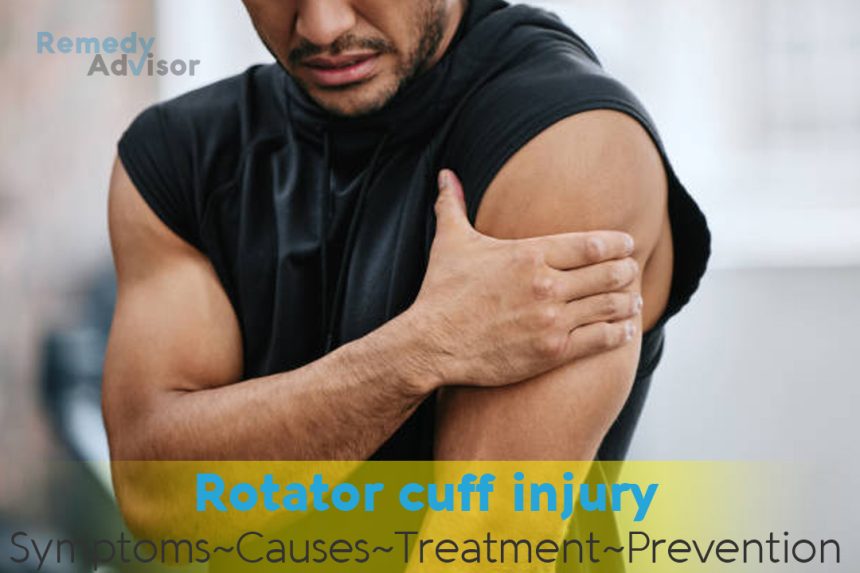What is it
Shoulder pain is often linked to the rotator cuff, a group of four delicate muscles (subscapularis, infraspinatus, supraspinatus, and teres minor) and their tendons. The rotator cuff stabilizes the upper arm in the shoulder socket and allows it range of motion.
Injuries to the rotator cuff vary in severity, ranging from rotator cuff tendinitis (a microscopic tear and inflammation of the rotator cuff) to rotator cuff tear, a rupture of a tendon.
Golfers, swimmers, tennis players, volleyball players, and baseball pitchers may all have trouble with their rotator cuffs, as may people who install high shelves, work with hand tools, or do anything with a lot of shoulder movement. Luckily, when caught early, a mild case of rotator cuff disease can be treated fairly easily.
Symptoms
- Sharp or dull pain in and around the shoulder joint; often worse at night.
- Pain aggravated by rotating or lifting the arm, especially raising it to shoulder level or higher.
- Shoulder weakness.
- Loss of shoulder mobility.
What causes it
Sports with a repetitive overhead movement (swimming, baseball, or tennis, for example) can gradually strain the rotator cuff tendons, as can manual labor such as painting, plastering, or even housework. A more acute injury can occur from lifting heavy objects or falling onto your shoulder or upper arm.
The pain that results may be caused by what’s known as an impingement syndrome. These means that due to effort or overdo, one or more of the rotator cuff muscles and tendons are imposed upon that is, flattened and annoyed by the shoulder bone, leading to swelling and perhaps microscopic or even bigger tears. The bursae, small fluid-filled sacs that protect the muscles and tendons from irritation by the bone, are usually inflamed as well. (Shoulder pain that occurs suddenly without an obvious acute injury or overuse activity may be bursitis?)
What if you do nothing
Rotator cuff pain is unlikely to heal on its own; at the very least you need to rest the shoulder and avoid activities that may be causing the problem. If you have rotator cuff pain, the important thing is to treat the injury so that it does not become chronic and interfere with your everyday activities.
Home remedies
The first stage of this condition may be tendinitis or bursitis, which is common not only in athletes but in non-athletes typically those 45 years and older as well. A mild case of shoulder tendinitis or bursitis can be treated with these measures.
Rest
If you suspect that a certain activity has caused the pain, stop it for a while.
Take over-the-counter pain relievers
Nonprescription NSAIDs (aspirin, ibuprofen, and naproxen) will help reduce pain and swelling; acetaminophen will help with pain but not inflammation.
Reduce inflammation
Apply ice during the first day or two; then try heat.
Condition your shoulder
Do some gentle exercises, to restore range of motion and strengthen the rotator cuff. These exercises will help get you started, but first discuss them with your doctor. Do not continue any exercise that causes pain.
(For chronic rotator cuff pain, you’ll need professional advice from a doctor or physical therapist in designing an exercise program.)
Prevention
If you are a golfer or swimmer or you have other risks for rotator cuff injuries, the same exercises, when performed regularly, can help strengthen your rotator cuff muscles and tendons and make them less susceptible to injury.







